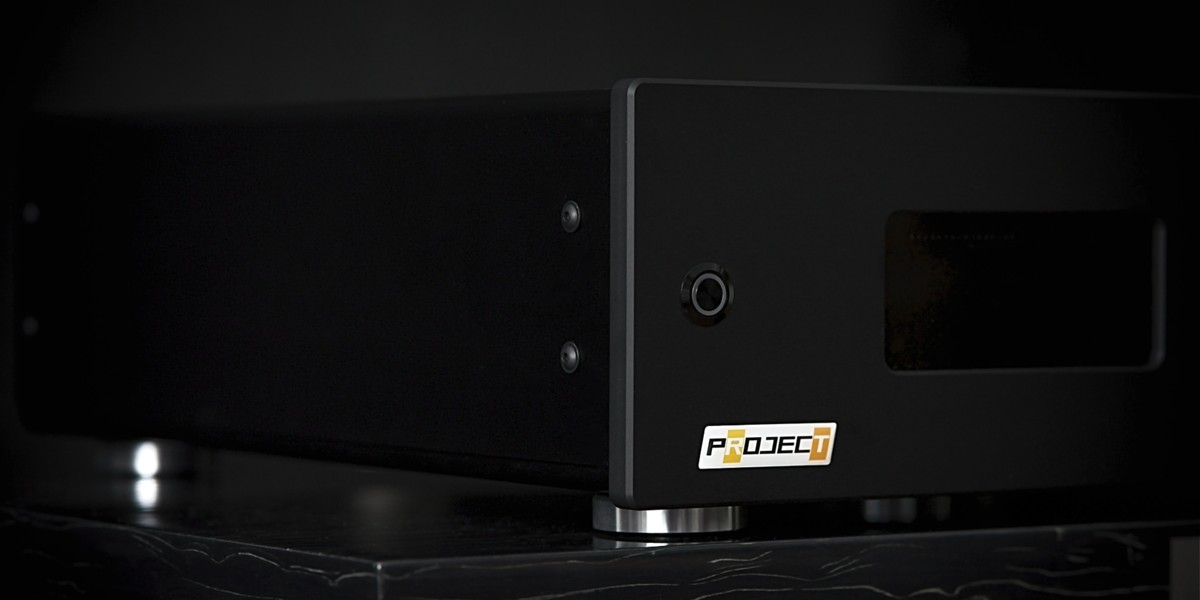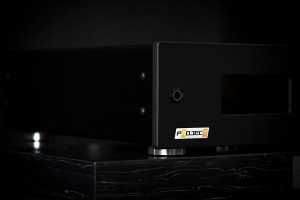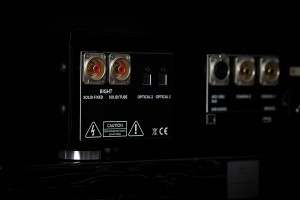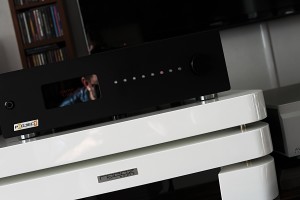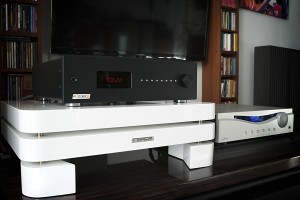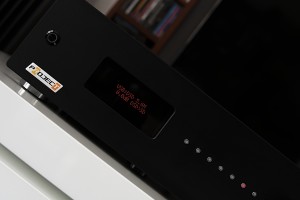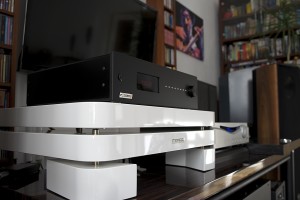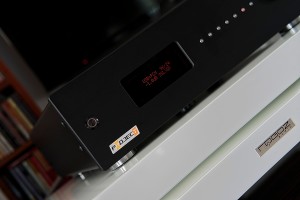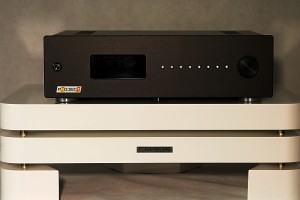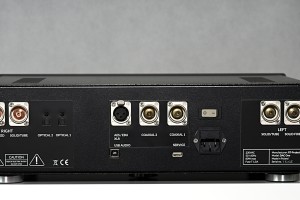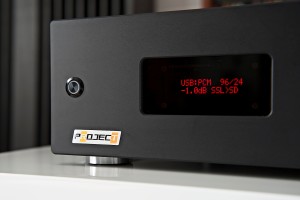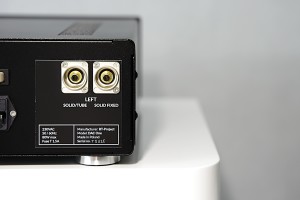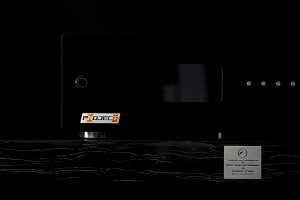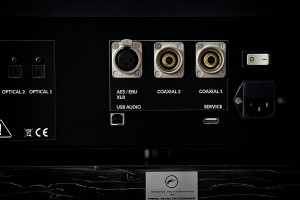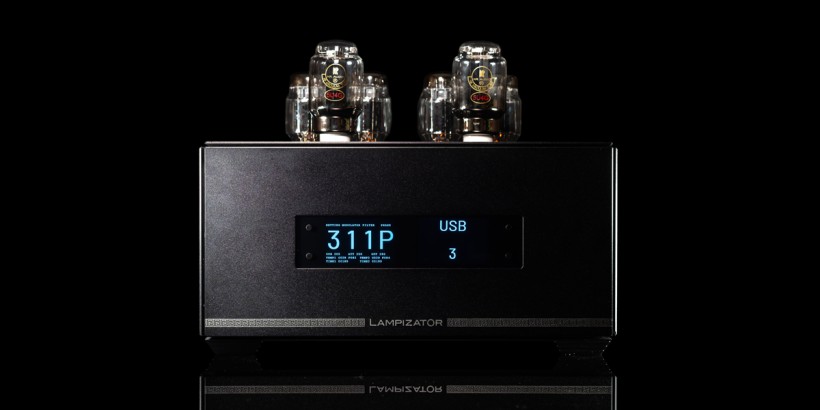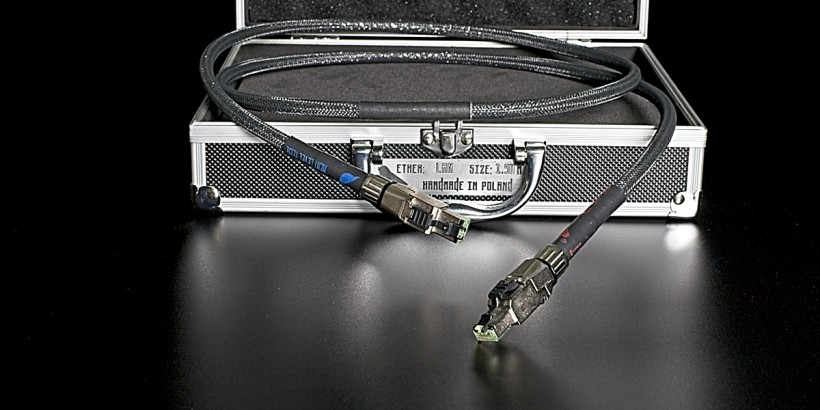It does not happen often that I revisit (almost) the same product and write about it again. This time I decided that this particular case was worth making an exception. The RT-Project DAC One is already known to our readers, as I wrote two reviews of this device before. This time, however, I received the Dual version for a review with additional feature – it supports not only PCM but also DSD files.
Introduction
When was it? I had to check. In April 2018, for the HighFidelity I reviewed the tube version of DAC One (see HERE), to only a few months later describe a solid-state version of the same converter (see HERE). If you haven’t read any of these texts, let me first encourage you to do so. However, if I do not succeed in convincing you, let me explain briefly that these are two reviews of the same D/A Converter developed by the Warsaw-based company RT-Project. It was founded by two ambitious man who, judging by the results, definitely know what they are doing. These engineers and music lovers follow the well-known principle: if you want something done well, do it yourself. To put it differently, they did not find any DACs (nor other components, for that matter, as their private music systems include not their own designs (yet), but heavily modified amplifiers) so they decided to develop their own. They called it DAC One.
The ambiguity of this name is striking, because it’s simply the first D/A Converter, or DAC no. ONE. DAC No. ONE can be also understood as the first one, but another interpretation could be less modest … Not only did they offer their own design but two versions of it. The digital section, functionality and appearance are the same in both cases. The difference is in the output stage. Tubes are used in one version, transistors in the other. Those who read my reviews know (I hope) that depending on the version the sound is slightly different, which does not change the fact that in both cases it is exceptionally good. If I had to choose one, even though I am a huge fan of a tube sound, I would have a big problem with a decision. Simply both versions have their advantages that come handy depending on the system and music they have to work with.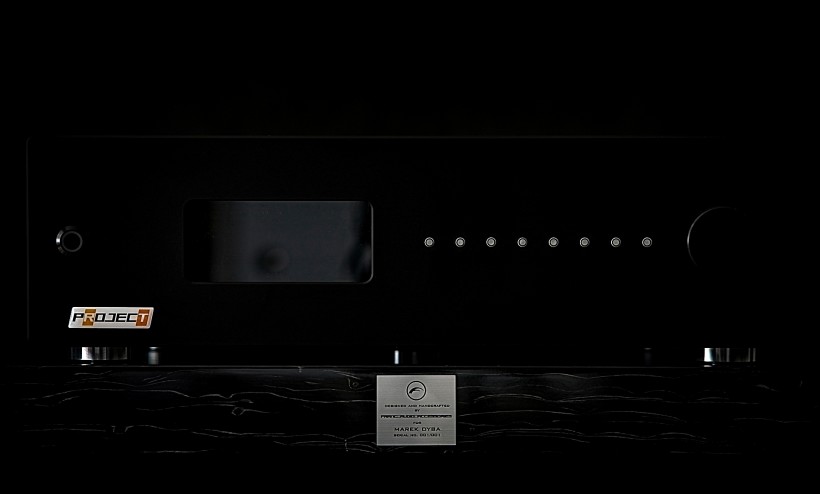 After my last review, the RT Project added a feature that I strongly advocated for, i.e. the support for not only PCM (including hi-res), but also my favorite format, the DSD. This feature is now available in every version of the DAC One. If the exciting, highly enjoyable performance wasn’t enough to convince me to spend some more time with this converter, adding DSD playback would surely do the trick for me. My problem would only be to choose which version to ask for. That would be an almost impossible choice as both versions have their advantages that I liked. Apparently there were more people, not just me, who couldn’t make their minds about this issue. This is probably why the RT-Project team decided not to let the excess of good choices end in potential customers choosing other brand’s product. The gentlemen sat down, brainstormed and … came up with a simple solution. If the decision is so difficult to make, why not give customers a chance to benefit from the advantages of both solutions? So they put both output stages into one chassis, and the only cost of this solution was giving up the balanced output. To make it even simpler for users switching between the two outputs is done with a simple push of a button on the remote control. This means that the selection can be made even for a specific album or track without even having to switch the DAC off and on again.
After my last review, the RT Project added a feature that I strongly advocated for, i.e. the support for not only PCM (including hi-res), but also my favorite format, the DSD. This feature is now available in every version of the DAC One. If the exciting, highly enjoyable performance wasn’t enough to convince me to spend some more time with this converter, adding DSD playback would surely do the trick for me. My problem would only be to choose which version to ask for. That would be an almost impossible choice as both versions have their advantages that I liked. Apparently there were more people, not just me, who couldn’t make their minds about this issue. This is probably why the RT-Project team decided not to let the excess of good choices end in potential customers choosing other brand’s product. The gentlemen sat down, brainstormed and … came up with a simple solution. If the decision is so difficult to make, why not give customers a chance to benefit from the advantages of both solutions? So they put both output stages into one chassis, and the only cost of this solution was giving up the balanced output. To make it even simpler for users switching between the two outputs is done with a simple push of a button on the remote control. This means that the selection can be made even for a specific album or track without even having to switch the DAC off and on again. It sounds great, right? I mean from user’s perspective. Those who can’t make up their minds about which version to choose can now buy the Dual version, while those who have a clear preference will choose the tube or solid-state version of the DAC One. There is one problem with that – generally speaking in audio the greater versatility of a component usually involves some compromises, and as a result a lesser sound quality. It may not necessarily be a significant difference, but still, our hobby is called a perfectionist one for a reason. Sometimes we spend a lot to objectively get only a tiny, little improvement in sound quality. Hence my first question, when the gentlemen offered me a chance to listen to their “new child” and explained what it was, was: what did you have to sacrifice to offer customers this Dual version of the DAC? They told me that there was no compromise in the sound sound quality, that the sound was as good as with any other version. The only difference was a lack of balanced output – they had to sacrifice it, but many users don’t really use or need it. How could I have said no to their proposal after this answer. I had to check with my own ears, whether it was really that good again. I had the DAC One Dual for over two months at my disposal so I had a chance to test it in numerous setups. Before we move on let me clarify one issue – it was me, not the manufacturer, who added the word “Dual” to the name of this version. The idea was to make it easier for me to write this text, and for you to read without confusing the three versions.
It sounds great, right? I mean from user’s perspective. Those who can’t make up their minds about which version to choose can now buy the Dual version, while those who have a clear preference will choose the tube or solid-state version of the DAC One. There is one problem with that – generally speaking in audio the greater versatility of a component usually involves some compromises, and as a result a lesser sound quality. It may not necessarily be a significant difference, but still, our hobby is called a perfectionist one for a reason. Sometimes we spend a lot to objectively get only a tiny, little improvement in sound quality. Hence my first question, when the gentlemen offered me a chance to listen to their “new child” and explained what it was, was: what did you have to sacrifice to offer customers this Dual version of the DAC? They told me that there was no compromise in the sound sound quality, that the sound was as good as with any other version. The only difference was a lack of balanced output – they had to sacrifice it, but many users don’t really use or need it. How could I have said no to their proposal after this answer. I had to check with my own ears, whether it was really that good again. I had the DAC One Dual for over two months at my disposal so I had a chance to test it in numerous setups. Before we move on let me clarify one issue – it was me, not the manufacturer, who added the word “Dual” to the name of this version. The idea was to make it easier for me to write this text, and for you to read without confusing the three versions. I will not repeat the full technical description of this design, because it is almost identical to the previous versions, that you can find in other linked reviews. Let me refer interested parties to them or to the manufacturer’s website for an in-depth information. I will repeat only the basic information. The DAC One features six digital inputs: one USB 2.0, two coaxial, two optical Toslinks and one balanced AES/EBU. As always, the USB is the most versatile one, as it supports PCM files up to 24 bits and 384 kHz as well as DSD64 and DSD128. Coaxial inputs support PCM signal up to 24 bits and 192 kHz and DSD 64 (DoP). The converter features dual AKM AK4495 DAC chips, one per channel, each operating in a “dual-balanced” mode. The input signal is not processed or digitally filtered, i.e. the DAC chips use every bit of unaltered information provided by the inputs (“bit perfect”). DACs are clocked from an external, differential Master Clock (MCLK) with extremely low phase noise (total jitter <1ps R.M.S). In a word, the MCLK is synthesized instead of being reproduced from the SPDIF/USB signal as in many competitive designs. Everyone who has dealt with high-end clocks knows perfectly well how important is their role in achieving high-end sound.
I will not repeat the full technical description of this design, because it is almost identical to the previous versions, that you can find in other linked reviews. Let me refer interested parties to them or to the manufacturer’s website for an in-depth information. I will repeat only the basic information. The DAC One features six digital inputs: one USB 2.0, two coaxial, two optical Toslinks and one balanced AES/EBU. As always, the USB is the most versatile one, as it supports PCM files up to 24 bits and 384 kHz as well as DSD64 and DSD128. Coaxial inputs support PCM signal up to 24 bits and 192 kHz and DSD 64 (DoP). The converter features dual AKM AK4495 DAC chips, one per channel, each operating in a “dual-balanced” mode. The input signal is not processed or digitally filtered, i.e. the DAC chips use every bit of unaltered information provided by the inputs (“bit perfect”). DACs are clocked from an external, differential Master Clock (MCLK) with extremely low phase noise (total jitter <1ps R.M.S). In a word, the MCLK is synthesized instead of being reproduced from the SPDIF/USB signal as in many competitive designs. Everyone who has dealt with high-end clocks knows perfectly well how important is their role in achieving high-end sound.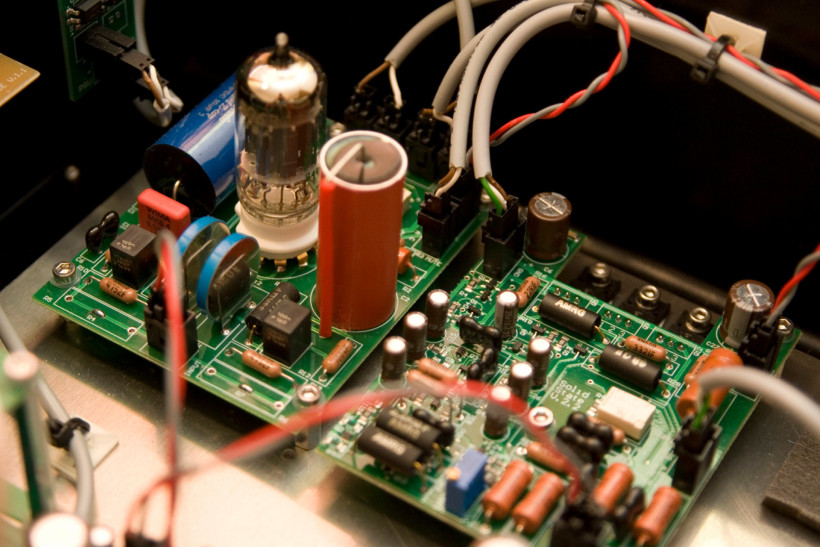 Selected Philips 5963 (ECC82) were used in the tube output stage, while Toshiba transistors work in the Class A solid-state one. Much attention was also paid to the power supply section, and the entire device uses high-class passive components from such manufacturers as: Amtrans, Jantzen, Cornell Dubilier, Elna, Nichicon, WIMA, and Vishay. Internal connections are made with silver-plated copper signal wires in a PTFE sleeves. You can tell this version from the other two by looking at its rear panel, where instead of the RCA and XLR analog outputs you will find two pairs of RCA sockets. The inner ones (since both outputs for the left and both for the right channel are grouped separately) allow you to use any output stage (i.e. switch between them using the remote control). Connecting outer sockets means that only solid-state one will be in use. The device can be ordered with a silver or black front panel. The previous two I reviewed featured silver face plates and looked very good, but this time I received a black unit. This version, especially in combination with a red display and all buttons with red backlit on the front looks very, very sexy. The included remote control is unlikely to win any beauty pageant, but it simply does its work efficiently allowing user to use all functions, including switching between output stages. The device is delivered in a solid transport case, so it should safely arrive to customers even in the furthest corners of the globe.
Selected Philips 5963 (ECC82) were used in the tube output stage, while Toshiba transistors work in the Class A solid-state one. Much attention was also paid to the power supply section, and the entire device uses high-class passive components from such manufacturers as: Amtrans, Jantzen, Cornell Dubilier, Elna, Nichicon, WIMA, and Vishay. Internal connections are made with silver-plated copper signal wires in a PTFE sleeves. You can tell this version from the other two by looking at its rear panel, where instead of the RCA and XLR analog outputs you will find two pairs of RCA sockets. The inner ones (since both outputs for the left and both for the right channel are grouped separately) allow you to use any output stage (i.e. switch between them using the remote control). Connecting outer sockets means that only solid-state one will be in use. The device can be ordered with a silver or black front panel. The previous two I reviewed featured silver face plates and looked very good, but this time I received a black unit. This version, especially in combination with a red display and all buttons with red backlit on the front looks very, very sexy. The included remote control is unlikely to win any beauty pageant, but it simply does its work efficiently allowing user to use all functions, including switching between output stages. The device is delivered in a solid transport case, so it should safely arrive to customers even in the furthest corners of the globe. One more element is worth mentioning an it can be quite important for many people. By default, the DAC One is equipped with a digital volume control, which allows user to directly connect the converter to a power amplifier(s). As not everyone favors digital volume control, one can simply set the volume to the maximum value and control the volume in the preamplifier or integrated amp. However, many people prefer simplistic systems, ones devoid of any unnecessary components. So those who will use the DAC One as the only source (but please remember that you can connect to it up to 6 digital ones) in the system may appreciate an idea of connecting it directly to a power amplifier. With them in mind the manufacturer has recently introduced a new, optional, higher-class hybrid volume control based on a resistor ladder (4 x 8 steps, Amtrans AMRG + Vishay Dale resistors). This is such a novelty that the DAC One delivered to me in August was not equipped with it yet. Actually, along with the tested Dual version, the hybrid volume control was presented during the Audio Video Show 2019 in Warsaw for the first time. Since I didn’t have a chance to learn anything about it or experience its performance I asked Mr. Bartosz Rutkowski for details and here is what he told me:
One more element is worth mentioning an it can be quite important for many people. By default, the DAC One is equipped with a digital volume control, which allows user to directly connect the converter to a power amplifier(s). As not everyone favors digital volume control, one can simply set the volume to the maximum value and control the volume in the preamplifier or integrated amp. However, many people prefer simplistic systems, ones devoid of any unnecessary components. So those who will use the DAC One as the only source (but please remember that you can connect to it up to 6 digital ones) in the system may appreciate an idea of connecting it directly to a power amplifier. With them in mind the manufacturer has recently introduced a new, optional, higher-class hybrid volume control based on a resistor ladder (4 x 8 steps, Amtrans AMRG + Vishay Dale resistors). This is such a novelty that the DAC One delivered to me in August was not equipped with it yet. Actually, along with the tested Dual version, the hybrid volume control was presented during the Audio Video Show 2019 in Warsaw for the first time. Since I didn’t have a chance to learn anything about it or experience its performance I asked Mr. Bartosz Rutkowski for details and here is what he told me:
The cost of additional volume control is PLN 1,500 nett and it is an option for all versions, including those already sold. In new devices this is also an option paid extra on top of the DAC price.
The difference compared to the standard digital volume control is only in the sound quality below -10dB, where the deterioration of quality is already noticeable. This is a balanced volume control in the PI system, so it is not referenced to the ground at all.
We used hybrid volume control only because of the lack of space for four resistor ladders (four balanced DAC chip outputs) in our device. In our hybrid solution there is a digital control only in the range from 0 to -3.5bB. It is completely imperceptible in terms of quality. Every four decibels, on the other hand, a resistor ladder (analogue control) switches the volume and then digital takes control again for another -3.5dB. So in the range from 0 to -3.5dB there is only a digital control (which does not negatively affect the sound quality), then every -4dB a hardware (analog ladder) one operates, then from -4 to -7.5dB digital, then again -8dB analog, then digital up to -11.5dB and -12 dB analog. And so on up to -40dB, and after that only digital control operates. 40dB is already such a low level that it is not useful during normal listening considering standard sensitivity of power amplifiers.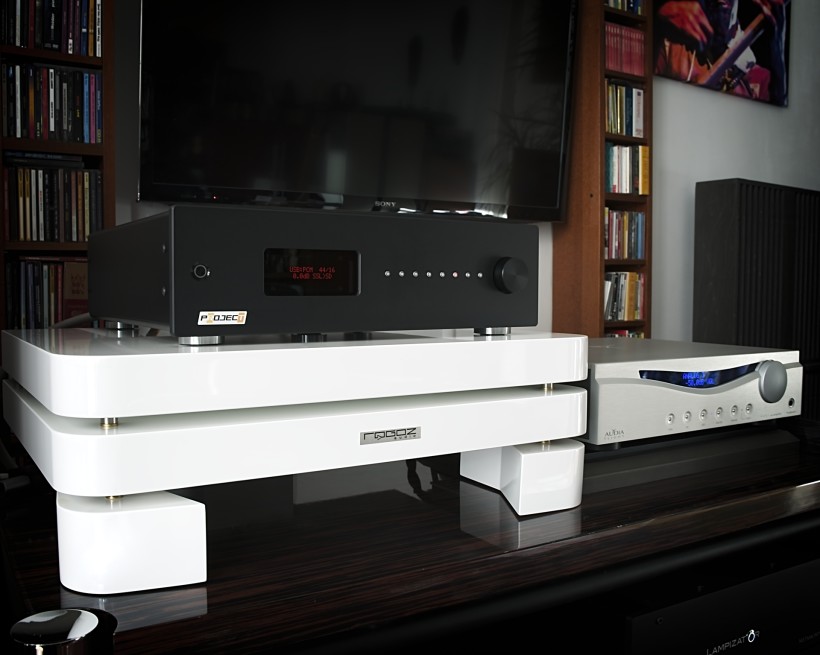
Sound
I hope that neither the manufacturer nor the readers will mind that I’m going to treat this text bit differently than “regular” reviews. Why? Well, because as I’ve mentioned, this DAC One Dual is a combination of two previously tested versions, that differ only in one section, the analog output. It had an impact on the performance, but not so much on its quality as on the type or “taste” if you will. So we are dealing with a variation on the subject of already reviewed converters that was developed for those who couldn’t decide which version they preferred. Or those who never had a chance to listen to any of previous version but will appreciate the versatility of Dual. I wrote myself that for me the preference depended largely on what amplifier a given converter worked with. With those offering a more tube-like (i.e. with vacuum tubes on board, but also solid-state ones working in class A) I usually preferred the transistor version of the DAC, but with class AB solid-states, definitely the tube one. Simply put, the DAC One in certain configurations better complemented the sound of a given amplifier/system. So I left answering the question of how the RT-Project DAC performs with my favorite DSD files for later, and instead I started listening sessions playing with tube/solid-state switch (tube/ss for short, so that I don’t have to use “tube output” and “solid-state output” again and again).
Does giving the user a way to quickly switch outputs solve the problem of not being able to make an unambiguous choice? Yes, but … it creates sort of a different “issue”. Let’s call it: an itching finger syndrome. It has a very simple solution, i.e. one just has to place the remote control out of reach. The further away the better – man’s inherent laziness should be stronger than the desire to push a button (at least it was for me). When I kept remote close my finger itched most of the time, at least during the first few days of listening sessions. I kept checking which output offered a more enjoyable sound not only for a given album but also individual tracks. It was not healthy. For one, only muscles in one of my finders worked out really hard, but most importantly, instead of listening to the music I was playing with the sound which is (at least for me) a fundamentally wrong approach – it should be about music, right? Although on the other hand, as lovers of not only music, but also the equipment that allows us to play it, we do love to play with new toys, don’t we? After adding a new component to our system there is always a phase of trying out, assessing, listening to at first favorite, and than, if these sound good, also to less liked albums to find out how they sound with the new “toy”. So in a way, my struggles with the DAC One Dual were not that unique.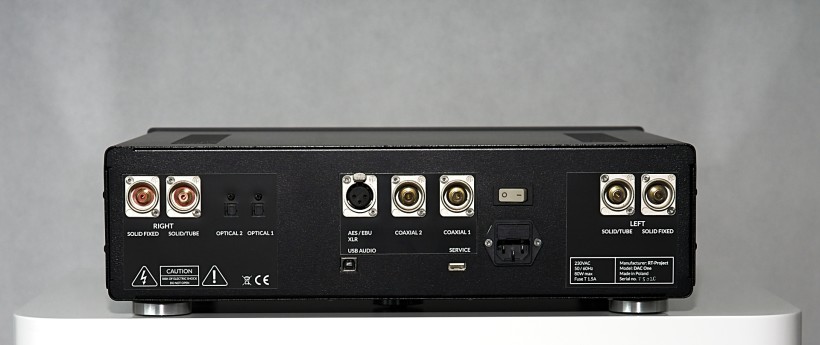 And what a great fun it was! At least for me, although I probably had more options than a “normal” user, because during several weeks I had the Dual at my disposal, I could play with it combined with some 6-7 amplifiers, integrated and separates, tube, solid-state and even a hybrid designs. In addition to my own two pairs of loudspeakers, several other ones came for reviews, including the quite expensive (over 50 kEUR) ones, the Pirol by SoundSPace Systems (see HERE). The conclusions from all these auditions were similar to the ones reached when I’d reviewed tube and solid-state versions before, but they were not as unambiguous as I remembered from previous reviews. Let’s take the session with the brand new hybrid power amplifiers by LampizatOr, called Metamorphosis, for example. I used them in combination with my excellent, solid-state preamplifier, the AudiaFlight FLS1. Due to the special design of these amps and the delicious mix of tubes and silicon sonic features they presented, I couldn’t decide which of Dual’s outputs I preferred. It depended more on the music being played than anything else.
And what a great fun it was! At least for me, although I probably had more options than a “normal” user, because during several weeks I had the Dual at my disposal, I could play with it combined with some 6-7 amplifiers, integrated and separates, tube, solid-state and even a hybrid designs. In addition to my own two pairs of loudspeakers, several other ones came for reviews, including the quite expensive (over 50 kEUR) ones, the Pirol by SoundSPace Systems (see HERE). The conclusions from all these auditions were similar to the ones reached when I’d reviewed tube and solid-state versions before, but they were not as unambiguous as I remembered from previous reviews. Let’s take the session with the brand new hybrid power amplifiers by LampizatOr, called Metamorphosis, for example. I used them in combination with my excellent, solid-state preamplifier, the AudiaFlight FLS1. Due to the special design of these amps and the delicious mix of tubes and silicon sonic features they presented, I couldn’t decide which of Dual’s outputs I preferred. It depended more on the music being played than anything else.
Same happened when I combined the Polish DAC with the Luxman, L-507uX II integrated. Although this is a solid-state device working in AB class, it still offers a slightly warmer, richer performance than many of its competitors. In both cases, with the tube output of the tested DAC, the sound became denser, fuller, phantom images were more three-dimensional and tangible, but at the same time the sound seemed a bit rounded, not as tight and fast as with a solid state output. The latter, in turn, delivered a bit “thinner” sound, but it didn’t feel like it lacked a proper richness. The dynamics was more impressive, and there was no rounding of the sound edges. The center of gravity of this performance seemed to be set a bit higher, although there was a low, even very low, powerful bass. Interestingly, with the transistor output, the decay seemed a bit longer to me, while the tube one was more focused on the sustain phase. Let me be clear about it – I’ve indicated these differences for you and it may sound as if they were very significant, but they weren’t. They were small but clear enough to point them out and for them possibly being a decisive factor when choosing one of the outputs over the other to better fit into individual preferences.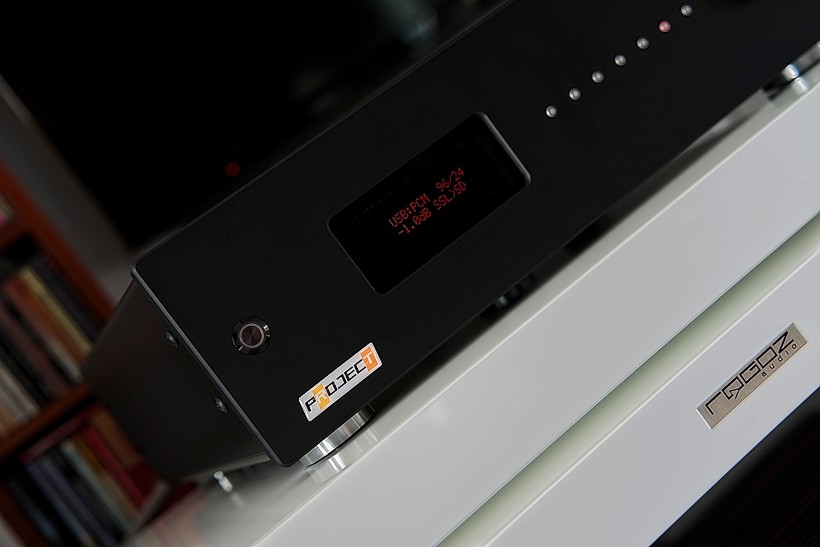 During the listening session with my GrandiNote Shinai (class A transistor), and even more so with the modified ArtAudio Symphony II (i.e. 300B SET integrated), at the beginning I had some doubts, but when I focused on music instead of comparing DAC output stages, more and more rarely did I reach for the remote control, eventually leaving the solid-state output on permanently. There was warmth, density, palpability, breath from amplifiers, and the DAC One added the speed, transparency, dynamics, tightness and even the “springyness” of the bass to the mix, and also emphasized the openness of the sound, that is so important to me. Together with these amplifiers, it simply created a more complete, synergistic presentation. At least as long as I listened to (Shinai) with the Ubiq speakers, because when I connected the MACH 4 (by GrandiNote) to the Italian amplifier (also by GrandiNote), i.e. faster, more dynamic and transparent loudspeakers, but with not as powerful, not as weighty bass, then the sonic input from the converter did not make such a significant difference anymore, and it sounded great whether I chose tube or solid-state output. I again started to play with them to better suit particular album or even track.
During the listening session with my GrandiNote Shinai (class A transistor), and even more so with the modified ArtAudio Symphony II (i.e. 300B SET integrated), at the beginning I had some doubts, but when I focused on music instead of comparing DAC output stages, more and more rarely did I reach for the remote control, eventually leaving the solid-state output on permanently. There was warmth, density, palpability, breath from amplifiers, and the DAC One added the speed, transparency, dynamics, tightness and even the “springyness” of the bass to the mix, and also emphasized the openness of the sound, that is so important to me. Together with these amplifiers, it simply created a more complete, synergistic presentation. At least as long as I listened to (Shinai) with the Ubiq speakers, because when I connected the MACH 4 (by GrandiNote) to the Italian amplifier (also by GrandiNote), i.e. faster, more dynamic and transparent loudspeakers, but with not as powerful, not as weighty bass, then the sonic input from the converter did not make such a significant difference anymore, and it sounded great whether I chose tube or solid-state output. I again started to play with them to better suit particular album or even track.
Listening to many discs with all kinds of music, of various quality, as well as recorded in different ways, I also found that no matter what system the DAC One played in, I sometimes preferred its tube and sometimes transistor output. An example of the first preference was the recordings of Vanessa Fernandez from “Use me” in DSD64 files. Files in this format are usually on the warmer, slightly darker, denser and smoother side of the things. Yet, this particular recording is extremely clean, precise, and as a result slightly brighter than the format would suggest, although it is absolutely not too bright. Listening to it in a system with Luxman and Ubiqs I preferred the tube output of the Polish DAC. It „added” some weight and richness the sound, and at the same time the bass was wonderfully tight, „springy”, and the midrange and treble impressed me with precision and richness. In turn, listening to Stanley Clarke from “School days” (PCM 24/96) I quickly chose the solid-state output, because the sound of this disc recorded in 1976 was already slightly warm, saturated in itself, and this output offered a faster and more dynamic performance which complemented the sound better. And since, as always on Stanley’s albums, bass played a big role here, so the even a bit better pace and rhythm and higher energy of the performance were additional, highly appreciated advantages. After a dozen of so days of listening to the Dual in several hardware configurations, with hundreds of tracks, I realized that, firstly, my itching fingers syndrome was almost completely gone, and secondly, that I listened to music for hours, sometimes quite loud and it never ended up with a headache or fatigue. For me it is the best indicator of how natural the sound of a reviewed component must be. The more time I spend with it for pure pleasure, the more certain I am that it offers a smooth, organic, engaging performance.That there are no digital artifacts, no irritating elements in the sound, but at the same time it is definitely not boring or else I wouldn’t spend any more time with it than I had to for review purposes. Sometimes I find that some components play each album, each song very nicely, but it’s always the same “nice way”, while the good ones can offer enjoyable sound while properly differentiating recordings. You may like the former at first, but sooner or later such an always nice, always the same performance must become boring. The music is supposed to provide emotions, excitement, and it is not possible without good differentiation. In this case in addition to the functional advantages, high-end sound as such, also complying with the high fidelity idea, for good and for bad, is a huge advantage of the DAC One in every version, including the Dual one. This is a source that allows you to listen to the music with great pleasure even from ordinary (but lossless) PCM files in 16/44 resolution, although the hi-res ones offer even better quality and more enjoyable performance. Knowing that, all that was left for me to do was to finally explore DAC One Dual’s DSD playback capabilities.
After a dozen of so days of listening to the Dual in several hardware configurations, with hundreds of tracks, I realized that, firstly, my itching fingers syndrome was almost completely gone, and secondly, that I listened to music for hours, sometimes quite loud and it never ended up with a headache or fatigue. For me it is the best indicator of how natural the sound of a reviewed component must be. The more time I spend with it for pure pleasure, the more certain I am that it offers a smooth, organic, engaging performance.That there are no digital artifacts, no irritating elements in the sound, but at the same time it is definitely not boring or else I wouldn’t spend any more time with it than I had to for review purposes. Sometimes I find that some components play each album, each song very nicely, but it’s always the same “nice way”, while the good ones can offer enjoyable sound while properly differentiating recordings. You may like the former at first, but sooner or later such an always nice, always the same performance must become boring. The music is supposed to provide emotions, excitement, and it is not possible without good differentiation. In this case in addition to the functional advantages, high-end sound as such, also complying with the high fidelity idea, for good and for bad, is a huge advantage of the DAC One in every version, including the Dual one. This is a source that allows you to listen to the music with great pleasure even from ordinary (but lossless) PCM files in 16/44 resolution, although the hi-res ones offer even better quality and more enjoyable performance. Knowing that, all that was left for me to do was to finally explore DAC One Dual’s DSD playback capabilities.
A few years ago, when DSD format became popular among audiophiles, the difference between the sound of such files and those encoded in PCM, even hi-res ones, was obvious. The former offered richer, smoother, more relaxed and at the same time more open sound. At least I perceived it that way. And I definitely preferred this sound from one offered by PCM, as in my view it was closer to the one I knew from my beloved vinyl records. Recently, however, I’ve felt that newer DACs don’t differentiate the sound based on files format so much, I mean not as much as in the past. Now it’s more about recording quality than format. So when I put together a long playlist in Roon, sometimes for a whole day of listening, I choose music based solely on musical preference, not formats or resolution anymore. And unless I focus on finding differences, I enjoy the music the same from PCM and DSD files. I own only few duplicated albums in several formats, and comparing the same recordings in DSD and PCM has (in my opinion) not that much sense anyway. Ultimately though, since listening to various albums for a long time did not give me an unambiguous answer to the question of the superiority of the DAC One Dual’s playback quality of one format over another, I finally reached for these few examples.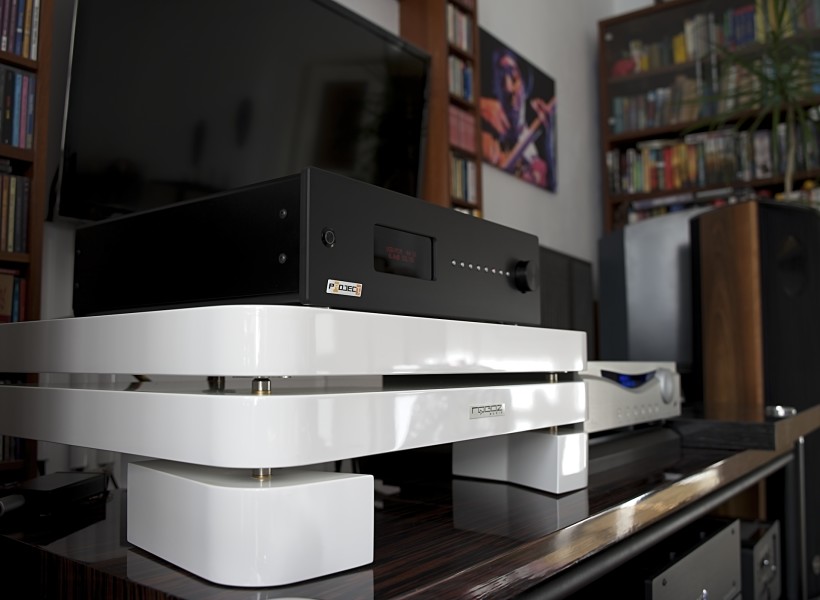 Among them was the Pink Floyd’s “Dark side of the Moon”, even though I am not a big fan of the DSD version (ripped from the SACD release). I’ve heard that the multi-channel version is very good, but the stereo one hasn’t really convinced me. And in fact, the 24/96 (PCM) version sounded better, cleaner, more dynamic. But when it came to the Genesis’ “Abacab” in DSD 64 and PCM 16/44 files they went almost head to head. Almost, because I would still take the DSD version over the PCM one for a bit richer, smoother, more enjoyable sound. Comparing two versions of the legendary “Jazz at the Pawnshop” yielded similar results. I liked the DSD version even more (meaning I liked the PCM a lot too), not only because it was smoother, more organic, but also because there was a bit more decay in this sound, more of the acoustics of this Swedish club was audible. This translated into a more convincing impression of me (almost) participating in this extraordinary musical event. Objectively, I have to admit that probably more than one person would like the slightly more precise, offering also an impressive separation of instruments, presentation from hi-res PCM files. But that’s a matter of individual preferences. The conclusion from the comparisons of both formats was simple for me. Since in some cases I preferred DSD and in others the PCM (that I’d known was remarkably good from reviews of previous versions of the DAC One) I could simply be sure that RT-Project team implemented DSD playback in an equally impressive way. What it means for potential buyers is that they should be happy with this DAC’s performance no matter their format preference. Just feed it with high quality music material and the sound will be extremely engaging, interesting, refined, resolving, open and highly enjoyable.
Among them was the Pink Floyd’s “Dark side of the Moon”, even though I am not a big fan of the DSD version (ripped from the SACD release). I’ve heard that the multi-channel version is very good, but the stereo one hasn’t really convinced me. And in fact, the 24/96 (PCM) version sounded better, cleaner, more dynamic. But when it came to the Genesis’ “Abacab” in DSD 64 and PCM 16/44 files they went almost head to head. Almost, because I would still take the DSD version over the PCM one for a bit richer, smoother, more enjoyable sound. Comparing two versions of the legendary “Jazz at the Pawnshop” yielded similar results. I liked the DSD version even more (meaning I liked the PCM a lot too), not only because it was smoother, more organic, but also because there was a bit more decay in this sound, more of the acoustics of this Swedish club was audible. This translated into a more convincing impression of me (almost) participating in this extraordinary musical event. Objectively, I have to admit that probably more than one person would like the slightly more precise, offering also an impressive separation of instruments, presentation from hi-res PCM files. But that’s a matter of individual preferences. The conclusion from the comparisons of both formats was simple for me. Since in some cases I preferred DSD and in others the PCM (that I’d known was remarkably good from reviews of previous versions of the DAC One) I could simply be sure that RT-Project team implemented DSD playback in an equally impressive way. What it means for potential buyers is that they should be happy with this DAC’s performance no matter their format preference. Just feed it with high quality music material and the sound will be extremely engaging, interesting, refined, resolving, open and highly enjoyable.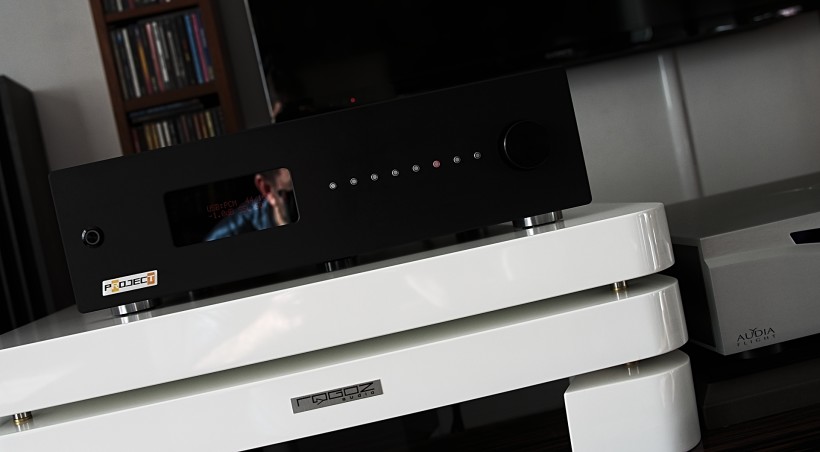
Summary
I’ve been asked many times about my soft spot for tube devices. I always try to explain that the sound character is one factor – the one offered by tube devices (that’s a general statement obviously that may not be true for some individual cases) just suits me better. But there is another important quality of most such components – tube rolling allows user to influence the sonic performance to some extend and that’s a huge benefit. The DAC One Dual is also, above all, a great sounding, featuring a wide range of digital inputs, well-made and looking source that reproduces hi-res files, now also including DSD 64 and 128. The sound of each of the previous versions could already have been shaped to some extent with digital filters (still available in Dual version), but these introduced quite subtle changes, to my ear. The Dual version goes one step further and on the one hand is an excellent choice for those who have a problem with determining their preferences – now they can have both, tube and solid-state outputs in one device. On the other hand, it allows you to change the sound even more with the touch of a button to suit your system and individual preferences for a particular album, track or mood at any given time.
Regardless of which files, output, digital filters one uses, the DAC One Dual always offers a remarkable performance – resolving, open, smooth, saturated, dynamic, coherent, spacious. The aforementioned choices can emphasize certain aspects of the sound, while maintaining a perfect balance between all elements of the sound and its coherence. Let me add, because it is very important, that the DAC One Dual differentiates recordings really well, which made my already third experience with this design still interesting, exciting and emotional. The more so that the RT-Project converter can extract a lot of music not only from the best audiophile recordings, but also those of a slightly lesser quality. So you can enjoy listening to it regardless of your musical preferences or file formats. This is not the best digital-to-analog converter in the world, but everything it has to offer in terms of sound and functionality put together makes it one of the most competitive ones that every one looking for a device from this or even somewhat higher price range, should definitely audition. Please, don’t just take my word for it – listen to it yourself, preferably in your own system. I’m pretty sure you will appreciate it too. It’s yet another remarkable audio product made in Poland!
Price (when under review):
- DAC One wersja Dual: 18.450 PLN (15.000 PLN excl. VAT)
- Manufacturer: RT-Project
Associated equipment:
- Analogue front end: J.Sikora Standard MAX turntable, J.Sikora KV12 tonearm , AirTight PC-3, phonostages: Grandinote Celio mk IV, ESE Lab Nibiru V 2.5
- Digital source: a passive, custom PC with WIN10, Roon, Fidelizer Pro 7.3, JCat USB Femto card with iFi power supply, Hdplex linear power supply for PC, JCAT USB Isolator
- D/A Converter: LampizatOr Pacific +Ideon Audio 3R Master Time (USB signal regenerator)
- Power amplifier: GrandiNote Shinai, ArtAudio Symphony II (modified), LampizatOr Metamorphosis
- Preamplifier: Audia Flight FLS1
- Loudspeakers: Ubiq Audio Model ONE Duelund Edition. GrandiNote MACH4, SoundSpace Systems Pirol
- Interconnects: Hijiri Million, Less Loss Anchorwave, KBL Sound Zodiac XLR, TelluriumQ Silver Diamond USB
- Speaker cables: LessLoss Anchorwave
- Power cables:LessLoss DFPC Signature, Gigawatt LC-3
- Power:Gigawatt PF-2 MK2 and Gigawatt PC-3 SE Evo+; a custom power line with Gigawatt LC-Y in-wall cable; Gigawatt G-044 Schuko and Furutech FT-SWS-D (R)
- Racks: Base VI, Rogoz Audio 3RP3/BBS
- Anti-vibration accessories: ROGOZ-AUDIO SMO40 and CPPB16 platforms and ROGOZ AUDIO BW40MKII feet, Franc Accessories Ceramic Disc Slim Feet and Wood Block Platform


